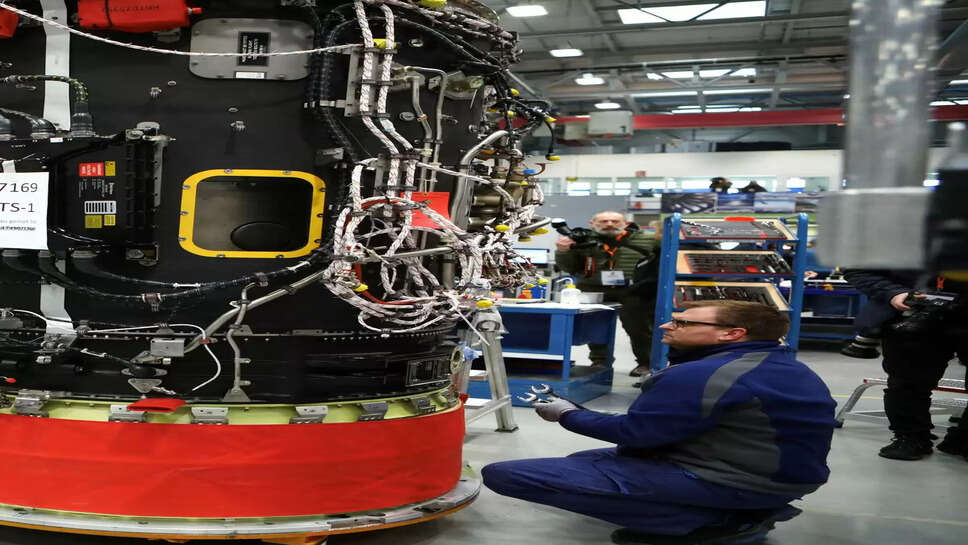Cabinet Holds Fire on AMCA Engine Deal, DRDO to Decide Between UK, France

India’s ambitious plan to develop next-generation combat aircraft under its indigenous defence programme is at a crucial crossroads, as the government weighs the strategic and technical implications of choosing between the United Kingdom and France for a crucial partnership—co-developing the engine for its advanced fighter jets. The Defence Research and Development Organisation (DRDO), the agency at the forefront of India’s military innovation, has been tasked with evaluating both offers in detail before the Union Cabinet makes a final decision.
At stake is the heart of India’s future fighter jet: a powerful engine that can provide the thrust, efficiency, and longevity necessary for future air superiority. Both Rolls-Royce (UK) and Safran (France) have made compelling offers to co-develop a combat aircraft engine with India, each with different levels of technology transfer, industrial participation, cost-sharing, and strategic leverage.
The Stakes: A Strong Engine for a Strong Jet
India is currently developing its fifth-generation fighter aircraft under the Advanced Medium Combat Aircraft (AMCA) programme. This indigenous stealth fighter is expected to play a vital role in replacing ageing aircraft in the Indian Air Force (IAF) and boosting the country's self-reliance in defence production under the “Make in India” initiative.
However, one of the biggest challenges in the AMCA programme is the engine. While India has made remarkable progress in avionics, airframe design, radar systems, and composite materials, it has struggled for decades to develop a world-class jet engine. The Kaveri engine programme, launched in the 1980s, failed to meet the thrust requirements for modern fighter jets, making foreign collaboration not just helpful but essential.
The Contenders: Rolls-Royce vs Safran
Both Rolls-Royce and Safran have a long history of engine development and have supplied engines for many frontline fighters globally. Their current interest in partnering with India reflects both the potential market and the strategic relevance of a closer defence relationship.
Rolls-Royce (UK)
Rolls-Royce has proposed a co-development model where it would share core technology and help India establish domestic manufacturing and testing facilities. The company has a proven track record, being the maker of the EJ200 engine that powers the Eurofighter Typhoon.
Key advantages of the Rolls-Royce offer include:
-
A potentially higher level of technology transfer.
-
Longstanding UK-India defence ties.
-
Willingness to integrate Indian private and public sector entities into the production ecosystem.
-
A possibility of future export opportunities via joint intellectual property.
Moreover, a partnership with the UK may offer India strategic leverage in terms of engaging with the broader AUKUS security framework, even if indirectly.
Safran (France)
On the other hand, French aerospace giant Safran has proposed a more extensive and deep co-development programme, which includes building a complete jet engine design center in India. Safran is also the maker of the M88 engine that powers the Dassault Rafale, which is already in service with the IAF.
Key features of Safran’s proposal:
-
Design and development of a new 110-120 kN engine tailored to AMCA requirements.
-
Significant technology transfer, including single crystal blade technology.
-
Deep involvement of Indian engineers in design, testing, and production phases.
-
A long-term roadmap for collaboration on civil and military engines.
India and France have seen increased defence cooperation in recent years, including the Rafale deal and joint naval exercises. Choosing Safran may be seen as building upon that successful history.
DRDO’s Role: Technical Evaluation
The DRDO, particularly its Gas Turbine Research Establishment (GTRE), is currently conducting a thorough technical assessment of both proposals. This includes evaluating:
-
The degree of access to critical technologies.
-
Timelines and delivery milestones.
-
Cost implications and cost-sharing models.
-
Intellectual property rights.
-
Opportunities for Indian industry participation.
The GTRE is also reportedly pushing for a model where India gets full ownership of the intellectual property (IP) created during co-development, which would allow further modifications, exports, and use in multiple platforms in the future.
Geopolitical Implications
The engine decision is not just a technical or economic one—it is deeply strategic. A tie-up with the UK could signal a shift toward deeper alignment with Western security architectures, while a partnership with France would reinforce an already strong bilateral defence relationship marked by autonomy and mutual respect.
India must also weigh the risks of future sanctions, export controls, or political strings attached to such strategic technologies. France has traditionally been seen as more independent in its foreign policy, while the UK, though eager for post-Brexit defence partnerships, is closely aligned with US policies.
Additionally, both countries are also competing for other major defence contracts in India, including naval and submarine deals. The choice of partner for the engine may influence negotiations in other areas.
The Cabinet Waits
Reports suggest that the Indian Cabinet, including the Prime Minister’s Office and the Ministry of Defence, is awaiting a final recommendation from DRDO before moving ahead. While the decision is expected to be taken before the end of the current fiscal year, officials are treading carefully.
The Cabinet’s approval will hinge not only on the technical merits and cost-effectiveness of the proposals but also on long-term strategic considerations. The government wants to ensure that the chosen partner helps India leapfrog in defence manufacturing and R&D capabilities.
Industry Participation and ‘Atmanirbhar Bharat’
The engine project is also seen as a test case for India’s defence manufacturing ambitions under the Atmanirbhar Bharat (self-reliant India) initiative. Both proposals involve extensive participation from Indian defence firms—public and private—including HAL, Bharat Forge, Godrej Aerospace, and L&T.
India wants this to be more than an assembly job. The goal is genuine co-development and co-production that includes:
-
Material science innovation (e.g., heat-resistant alloys).
-
High-precision manufacturing for turbine blades.
-
Indigenous test facilities for engine trials.
-
Creation of a skilled domestic workforce in aero-engine development.
A Make-or-Break Decision
Choosing between the UK and France for the AMCA engine collaboration could define the future of India’s aerospace industry for decades. It will influence not only the success of the AMCA but also India’s capability to develop future platforms—manned and unmanned—on its own terms.
While both Rolls-Royce and Safran offer compelling packages, the final decision will likely be shaped by which country is willing to go further in giving India true ownership of critical engine technology. The government’s cautious approach signals that this is not just another defence deal—it’s a nation-defining moment in India’s journey toward military and technological sovereignty.
As the Cabinet waits for DRDO’s green signal, the world watches closely to see which direction India chooses in its quest to power its fighters with engines born at home, in partnership with a trusted global ally.
